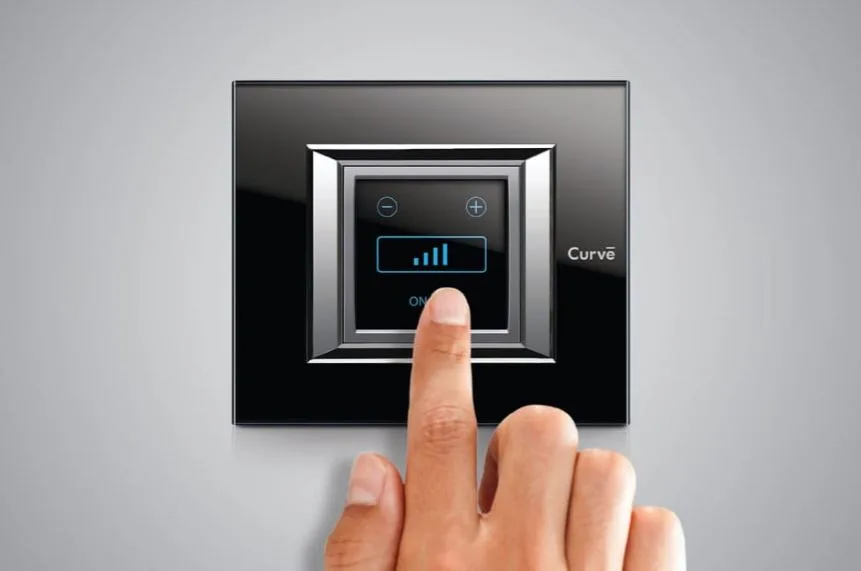Touch Switches: Sleek Control for Lights & Lamps
In the age of smart homes and minimalist design, traditional light switches are rapidly being replaced by modern alternatives that offer both convenience and aesthetic appeal. One of the standout innovations in this space is the touch switch—a sleek, intuitive solution for controlling lights and lamps. Whether you’re renovating your space or building a new one, touch switches offer an elevated way to interact with your lighting system.
This article explores what touch switches are, how they work, their benefits, and why they’re becoming the go-to choice for homeowners and interior designers alike.
What Are Touch Switches?
Touch switches are electronic switches that allow users to control electrical devices—most commonly lights and lamps—by simply touching a sensor or surface, rather than flipping a mechanical toggle or pressing a button. They rely on capacitive or resistive sensing to detect the human touch and respond accordingly.
Some models come with features like:
- Dimming capability
- Multi-way control
- Remote or app-based control integration
- LED indicators
- Voice control compatibility via smart home systems
From subtle taps to smart gestures, these switches redefine the user experience in both residential and commercial environments.
How Do Touch Switches Work?
Most modern touch switches use capacitive sensing technology. When a human finger comes into contact with the switch surface, it causes a change in the electrical field, which is detected by a microcontroller. The controller then triggers the connected light or device to turn on, off, or dim.
Unlike traditional switches with mechanical components that wear out over time, touch switches rely on solid-state electronics, which makes them more durable and responsive.
Key Benefits of Touch Switches
- Modern Aesthetic Appeal
One of the most compelling reasons to install touch switches is their sleek and futuristic look. With glass or smooth acrylic panels, these switches blend seamlessly into modern décor. They are available in a variety of finishes and styles, allowing you to match them with any interior design theme.
Minimalist homes, high-end apartments, and tech-forward commercial spaces benefit especially from the clean lines and streamlined appearance of touch switches.
- Ease of Use
Forget fumbling for switches in the dark. Touch switches are highly intuitive—simply tapping the surface controls the connected light or device. Many models also come with LED backlighting that makes them easy to locate at night.
Some advanced models can be integrated with motion sensors or voice assistants, offering hands-free convenience.
- Enhanced Durability
Mechanical switches have moving parts that degrade over time. In contrast, touch switches have no mechanical action, making them less prone to wear and tear. This is especially useful in high-traffic areas or commercial settings where switches are used frequently.
- Smart Features
Modern touch switches often include smart home integration. You can:
- Control them remotely via smartphone apps
- Set timers or schedules
- Monitor energy usage
- Sync them with voice assistants like Alexa, Google Assistant, or Siri
This turns a basic light switch into a smart control hub that enhances convenience and energy efficiency.
- Safety and Hygiene
Since touch switches are flat and easy to clean, they promote better hygiene—especially important in shared or public spaces. In homes with children, touch switches with shockproof or child-lock features add an extra layer of safety.
Ideal Applications for Touch Switches
Touch switches are versatile and can be used in a variety of spaces, including:
- Living Rooms – Control ceiling lights, floor lamps, and accent lighting with elegance.
- Bedrooms – Dim bedside lamps without getting out of bed.
- Kitchens – Turn on under-cabinet lighting or pendant lamps with a touch—even with wet or messy hands.
- Bathrooms – Sleek, waterproof models offer safe control of vanity or ambient lights.
- Offices – Streamline lighting in meeting rooms or workstations with one-touch control.
They’re also ideal in hospitality settings like hotels, where aesthetics and convenience are crucial for the guest experience.
Installation and Compatibility
Touch switches are generally easy to install and can often replace traditional switches with minimal wiring changes. However, it’s important to check:
- Voltage and current ratings
- Compatibility with LED, CFL, or incandescent bulbs
- Load capacity (especially for dimmable switches)
- Whether a neutral wire is required (some models need one)
For smart models, you may need to connect the switch to a Wi-Fi network or a smart home hub.
If in doubt, consult a certified electrician to ensure safe and proper installation.
Things to Consider Before Buying
Before upgrading to touch switches, keep the following in mind:
- Budget: While more expensive than traditional switches, touch switches offer more features and durability.
- Design: Choose a finish and shape that complements your interior.
- Features: Consider whether you need dimming, app control, or integration with smart home devices.
- Brand and Warranty: Opt for reputable brands that offer good customer support and product warranties.
Final Thoughts
Touch switches are a fusion of form and function, offering a stylish and intelligent way to control your lighting. With their sleek appearance, user-friendly interface, and smart capabilities, they are quickly becoming a staple in modern home design.
Whether you’re renovating your home, designing a smart office, or simply upgrading your lighting system, touch switches offer an easy yet impactful improvement. They bring a touch of sophistication—literally—to everyday life.
In a world where technology continues to transform how we live and interact with our environment, touch switches stand out as a simple yet powerful upgrade for any space.


